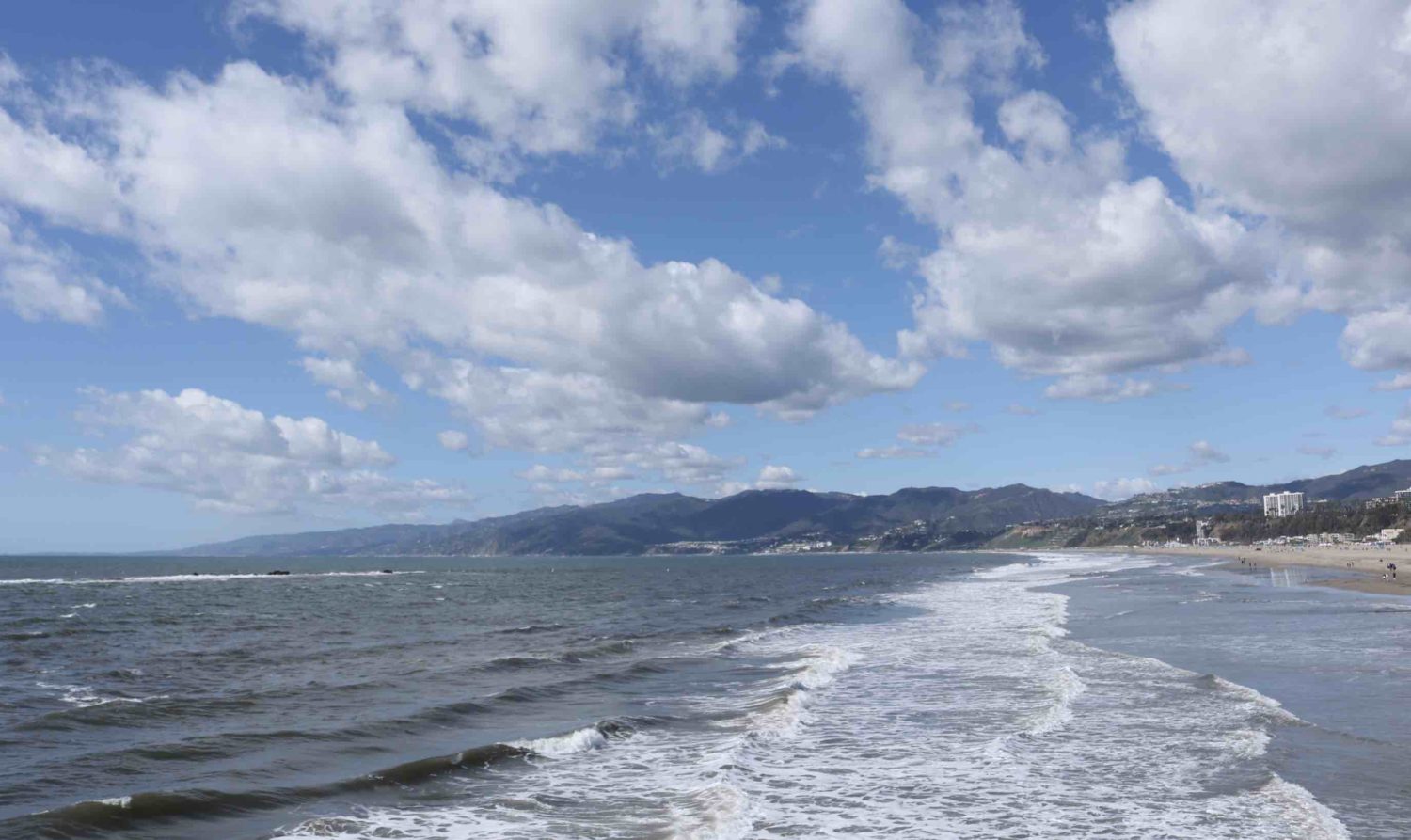Big Moves for the Bay: 3 Environmental Updates in L.A.

(Photo of Santa Monica Bay taken by Lidia Grande-Ruiz on February 16, 2019.)
Los Angeles decision-makers, and leaders throughout California, announced three major initiatives this February. The moves could dramatically shift our region and state toward a sustainable future.
What a month for our natural environment! And, no, we don’t mean this crazy weather.
Our policy leaders just took a big stand against these notorious environmental offenders: single-use plastics, fossil fuels, and wasted water. Here is the rundown on what action was taken and how it directly impacts the health of our ocean and communities.
1. Solving our pollution crisis by rethinking our waste stream
New legislation has been introduced in California, which tackles single-use waste and pollution at the source! The proposed legislation will push ALL industries to meet California’s single-use waste standards — requiring single-use plastic packaging distributed or sold here to be truly recyclable or compostable by 2030. It also requires industries to decrease single-use disposables by 75 percent through source reduction or recycling.
We are so proud to help California take the lead on reducing single-use waste. Heal the Bay volunteers have removed four million plastic items from our beaches over the last two decades (the most common plastic finds are polystyrene and plastic pieces, wrappers, snack bags, bottle caps, and straws).
While the bills (AB1080 & SB54) are in the early stages of development, we are thrilled to be working on this comprehensive solution that will impact generations to come. Please stay tuned for developments. And thanks to Ben Allen, Lorena Gonzalez, Scott Wiener, Nancy Skinner, Laura Friedman, Phil Ting and Tasha Boerner Horvath for leading the charge!
2. Increasing our water supply with a smart plan for wastewater
Los Angeles Mayor Eric Garcetti announced that the Hyperion Water Reclamation Plant (aka sewage treatment plant), one of the largest in the world, will recycle 100% of the City’s wastewater by the year 2035.
The water will be treated extensively and then put into our local groundwater supply for additional treatment by natural soils. Afterwards, the clean water will be pumped up to replenish our local tap water supply. Hyperion’s capacity is 450 million gallons per day and treated water currently flows out to the ocean. But with full recycling at Hyperion we can re-use that water!
Los Angeles is a big city, and pulls a significant amount of water from the Eastern Sierra and San Francisco Bay-Delta. Our local water use impacts the entire state of California. By taking smart action, we reduce our reliance on far-away water sources and become more self-sufficient.
Back in the 1990s, Heal the Bay won the fight to stop partially-treated sewage flowing from Hyperion into the Santa Monica Bay. Once again, we’re seeing the results of collective action with the new plan to treat and re-use all that water — instead of sending it uselessly to sea. Our founder Dorothy Green would be so proud of L.A. for taking this giant step forward.
3. Saying farewell to fossil fuels for clean and safe alternatives
Garcetti made another big announcement this month in favor of sustainability. He stated that the Los Angeles Department of Water and Power has a deadline to close three coastal gas-burning power plants in El Segundo, Long Beach and the Los Angeles Harbor area by 2029. The plants will be replaced by renewable energy sources and storage.
Not only does this drastic change help to reduce the emission of greenhouse gas, it also puts an end to the harmful practice of using ocean water for once-through cooling, which makes sea water more acidic and destroys marine and estuarine life in the process. Nearly 10 years ago, Heal the Bay was instrumental in advancing a policy to address the phase out of once-through cooling at coastal power plants in California. Finally, the tides are a-changin’.
If you squint out onto the horizon, you’ll see them. Local marine animals are jumping for joy and celebrating a brighter tomorrow.
Thank YOU for your commitment to clean water. We wouldn’t be having these critical conversations about policy without your ongoing support and advocacy.



